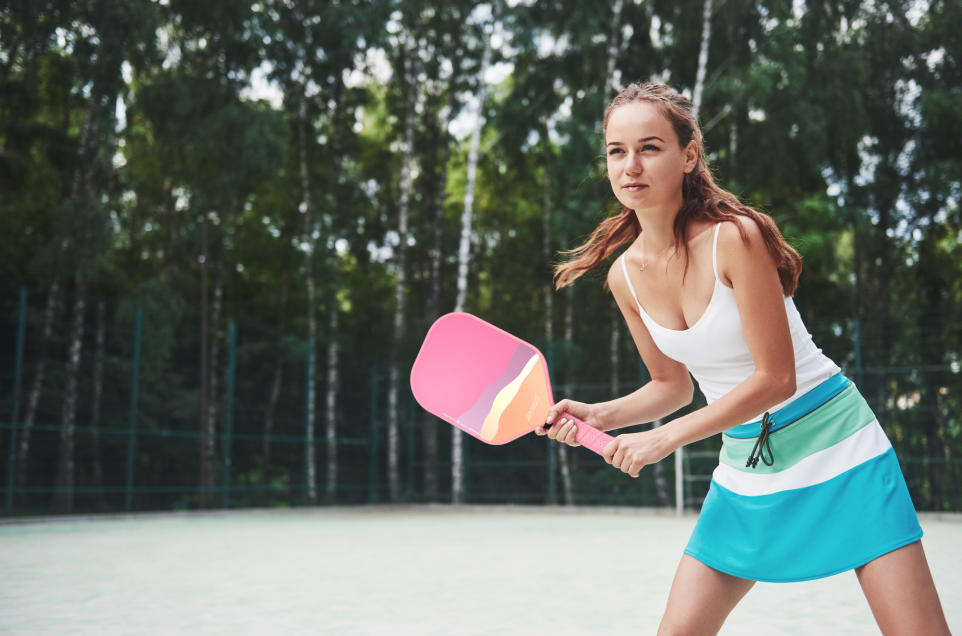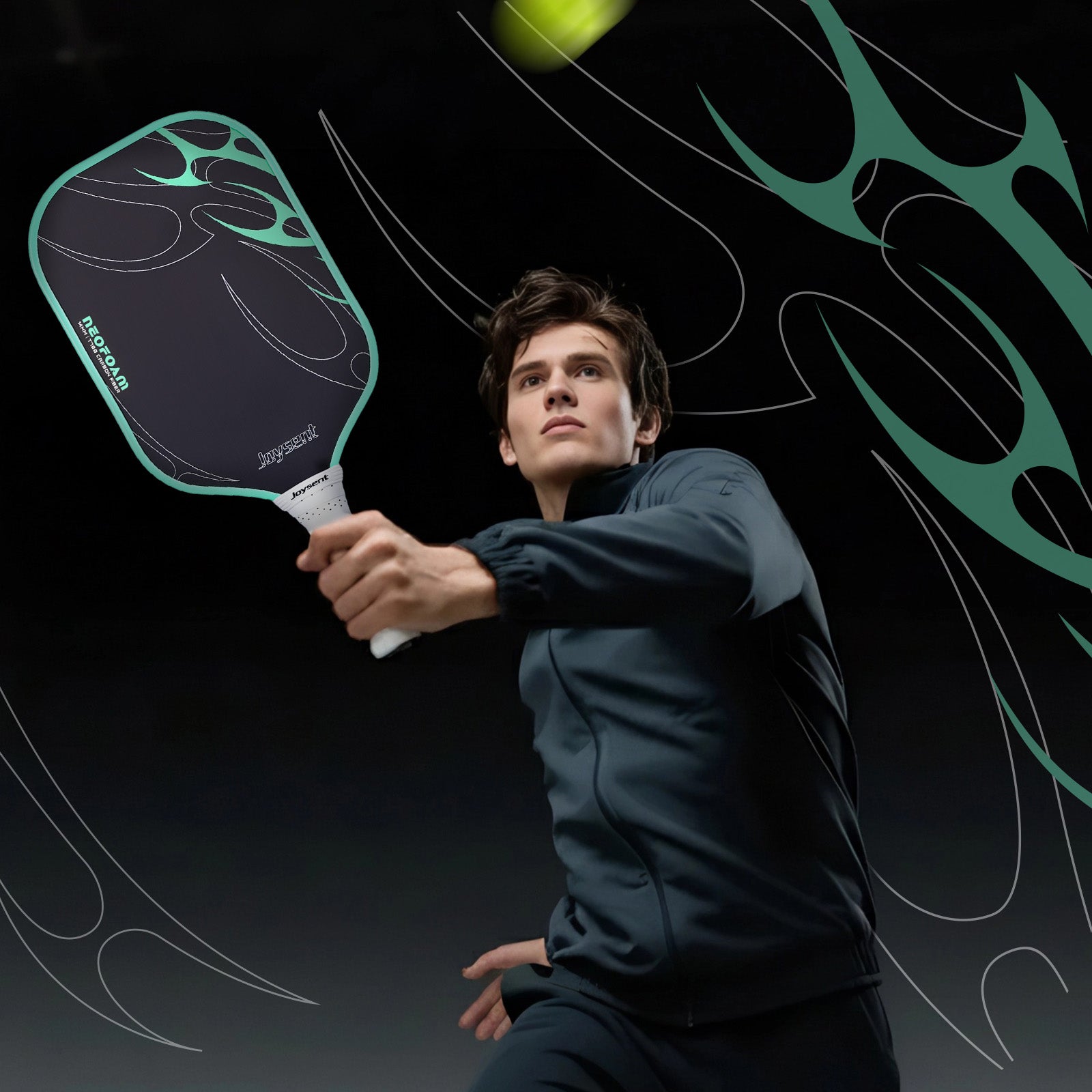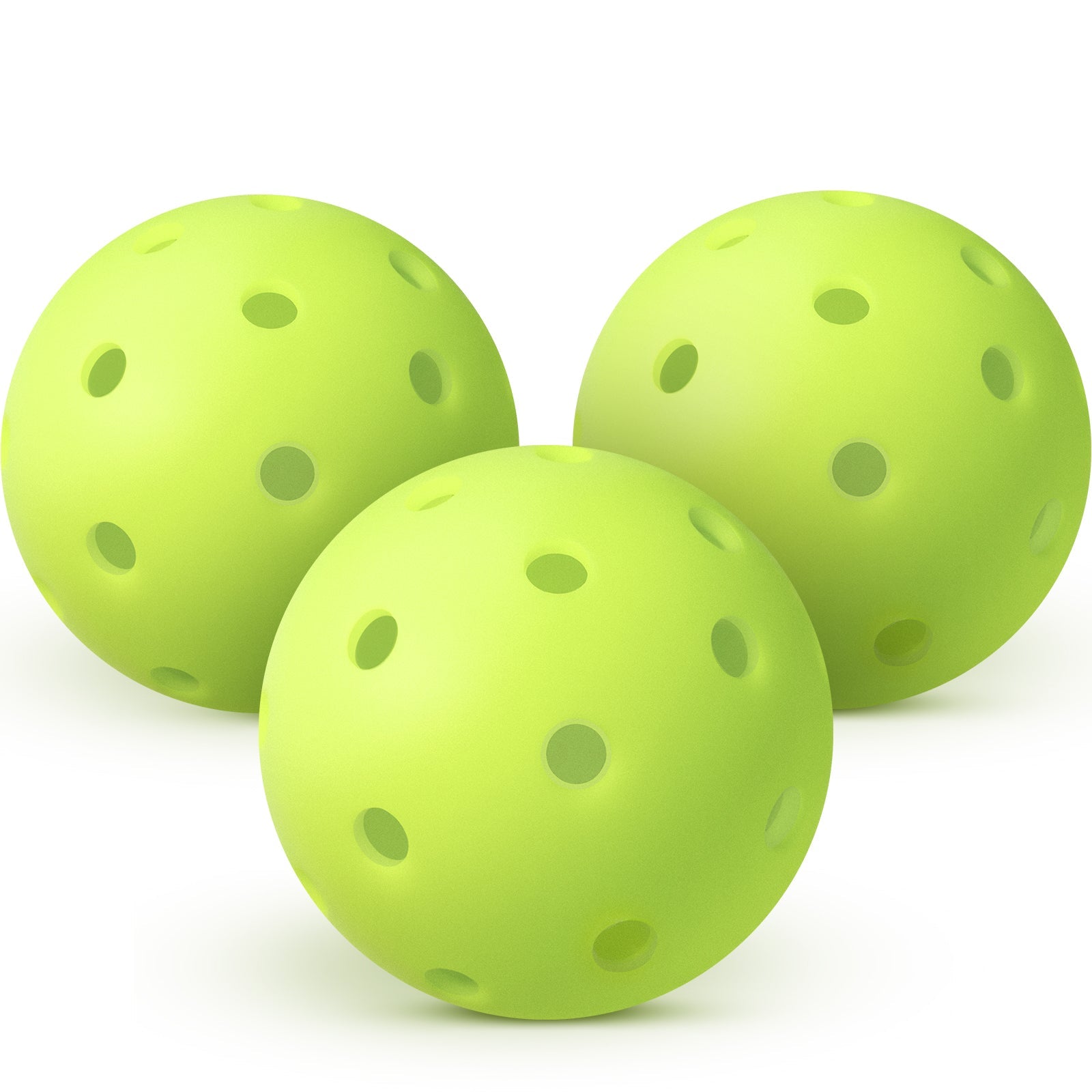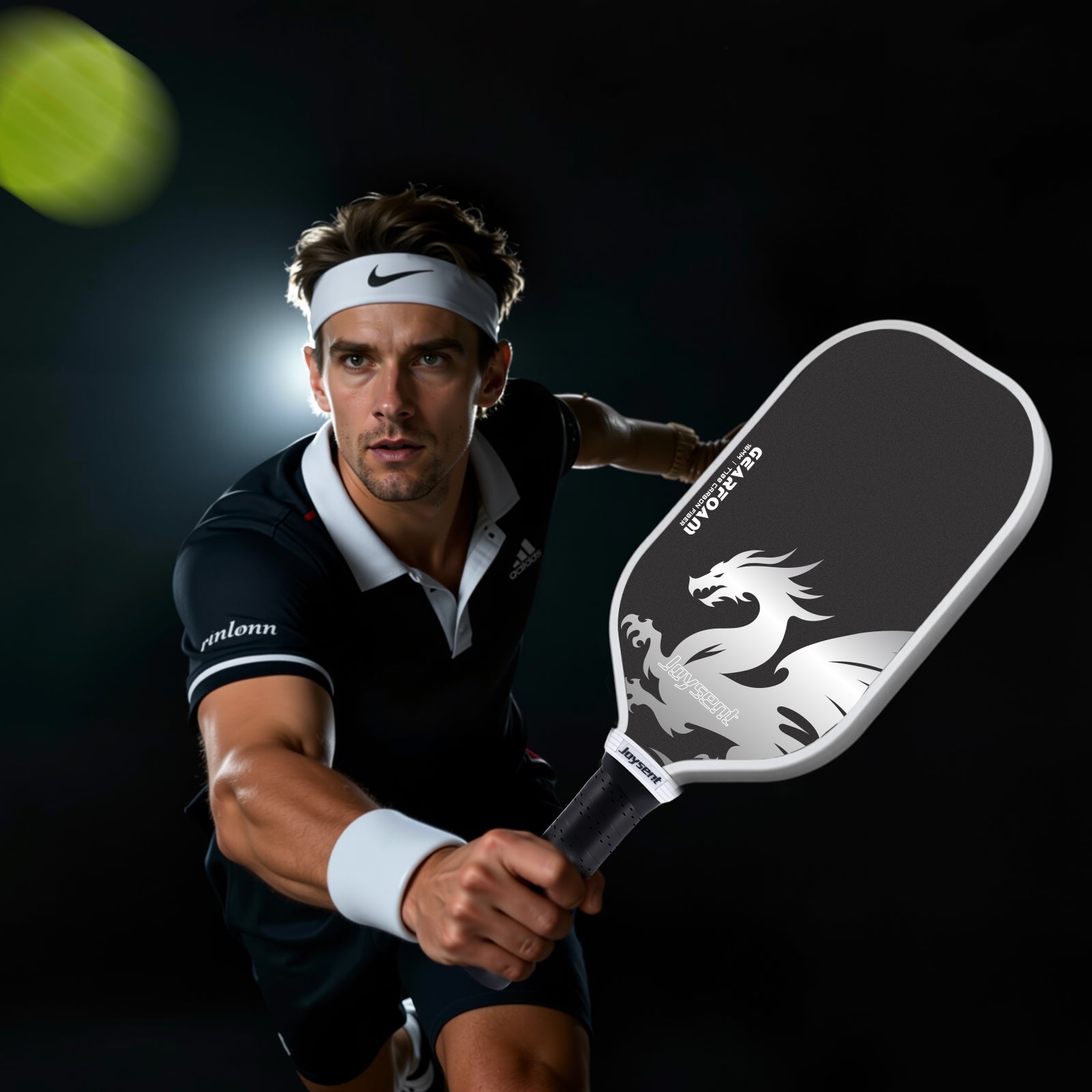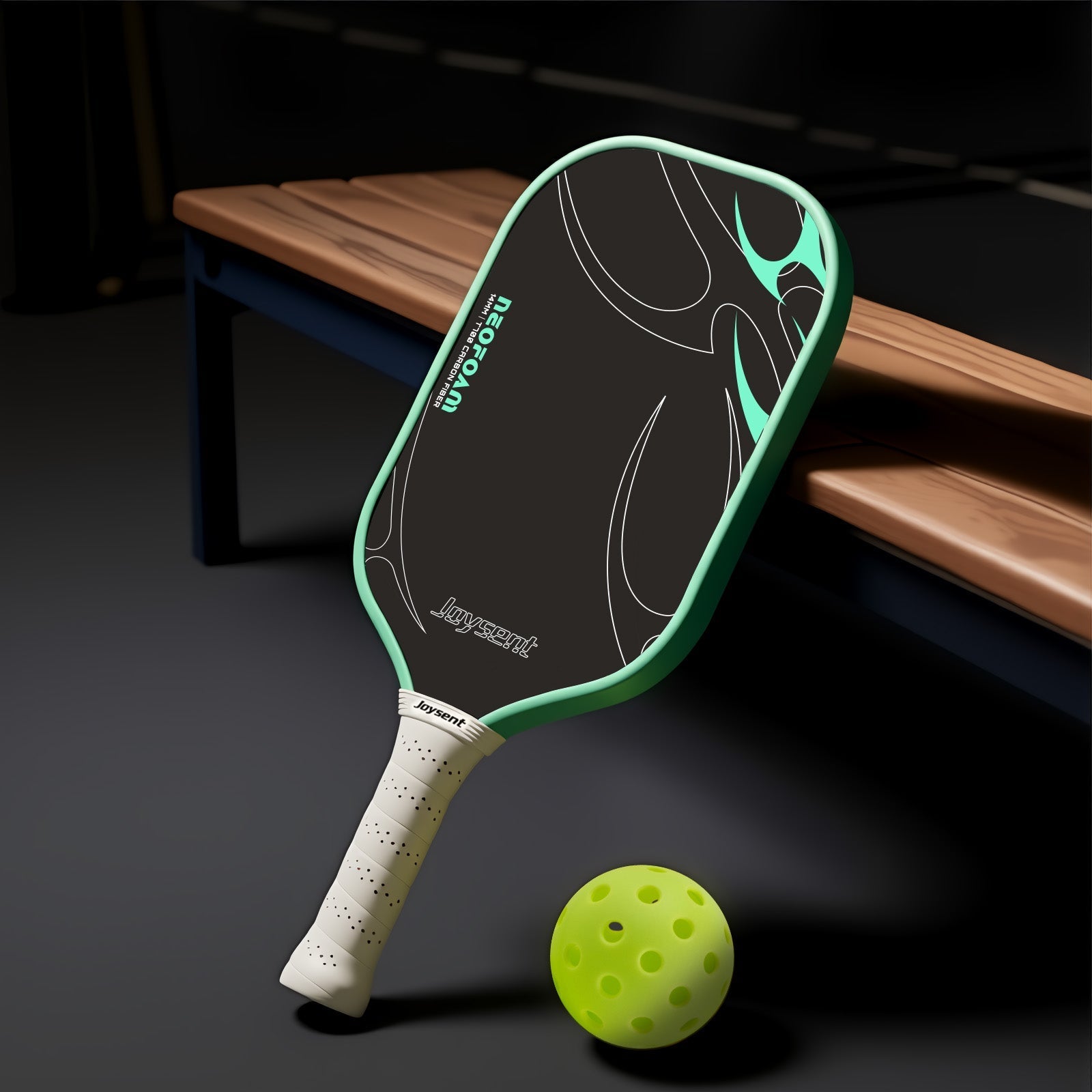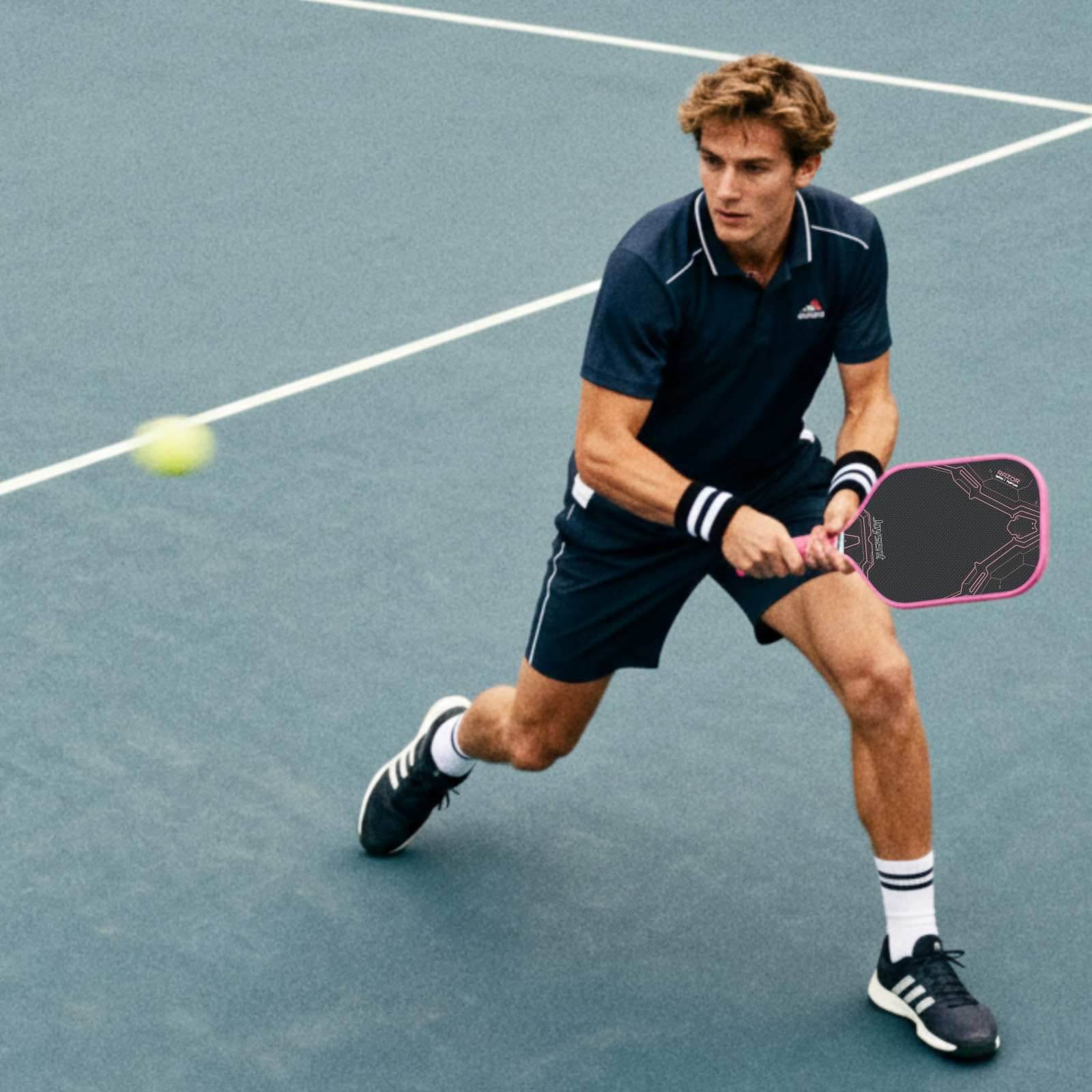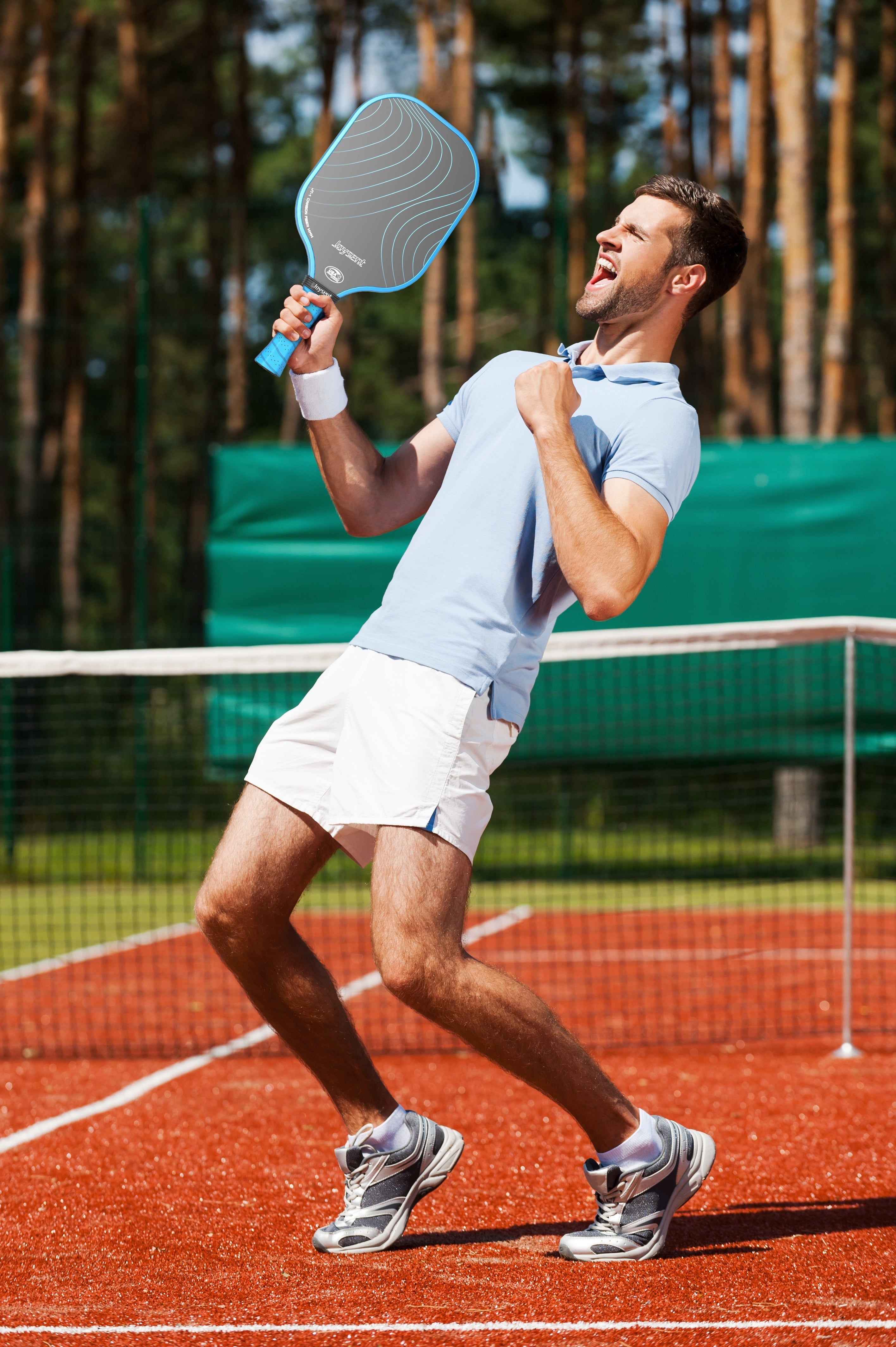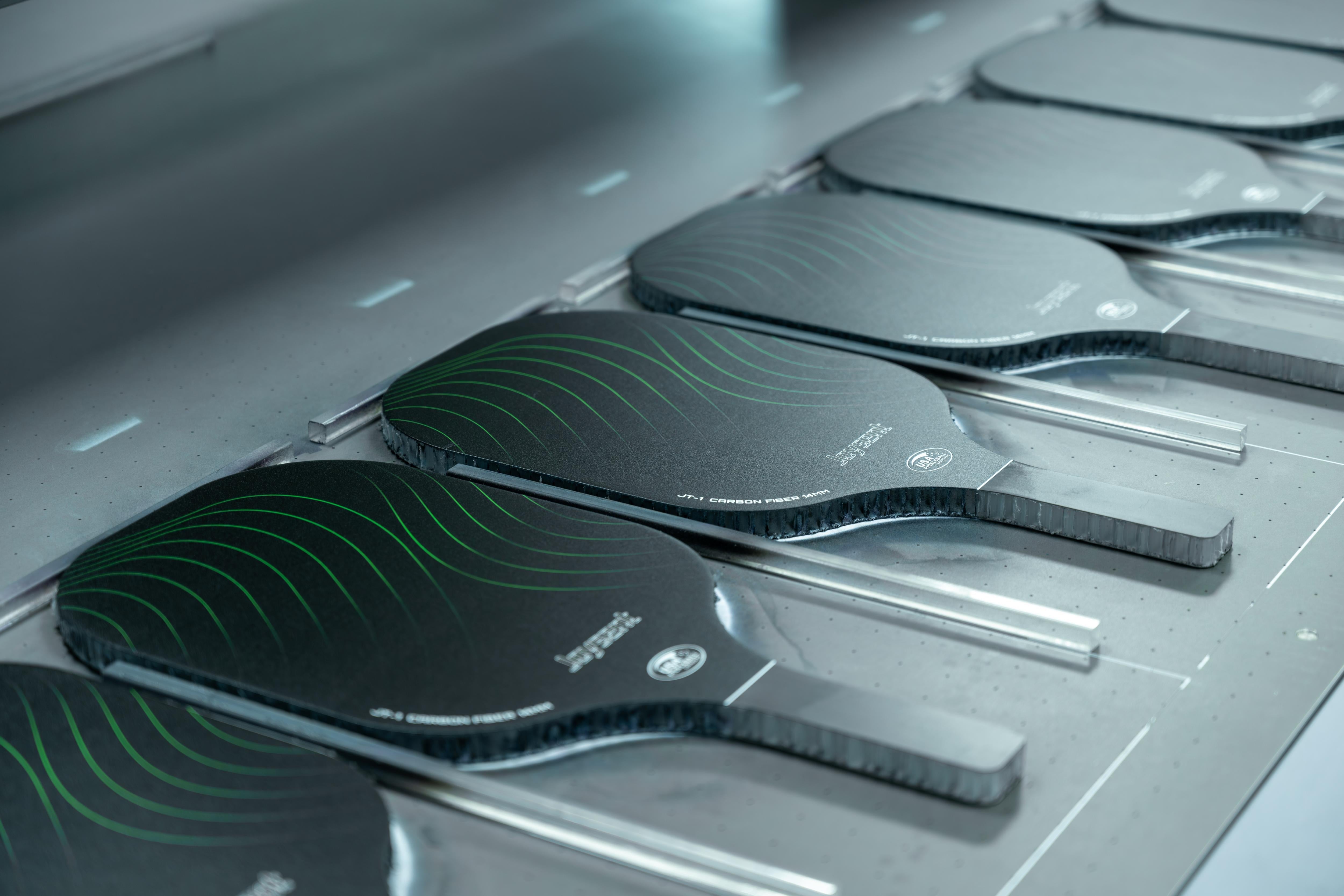
Carbon Surface Grades Explained: T300, T700, and What They Mean
A Clear Guide to 3K, 12K, 18K & 3D 18K for Pickleball Paddles
Summary When shopping for a pickleball paddle, you’ve probably seen terms like T700, 3K, or even 3D 18K thrown around. These carbon fiber grades and weaves aren’t just fancy marketing—they directly affect how your paddle feels, performs, and lasts. In this guide, we break down what these terms mean and how to choose the right surface for your playing style.
🧵 What Does “T300” or “T700” Mean?
“T” stands for “Tow”, a measure of how many filaments are bundled in each carbon fiber thread. The number (e.g. 300, 700) refers to the tensile strength level of the fiber.
➤ T300 Carbon Fiber
-
Grade: Entry-level
-
Performance: Soft feel, moderate strength
-
Common Use: Lower-cost paddles and products
-
Best For: Casual players or beginners looking for comfort
➤ T700 Carbon Fiber
-
Grade: Intermediate to high performance
-
Performance: Stronger and stiffer than T300
-
Common Use: Used in many pro-level paddles
-
Best For: Players wanting more pop, durability, and power
🎯 Fun Fact: Many USAP-approved paddles use T700 due to its excellent balance between stiffness and weight.
🧶 What Do 3K, 12K, and 18K Mean?
These refer to the weave density—the number of carbon filaments per bundle.
-
3K = 3,000 filaments per tow
-
12K = 12,000 filaments per tow
-
18K = 18,000 filaments per tow
The larger the K, the thicker and more rigid the carbon layer becomes.
➤ 3K Carbon Fiber
-
Weave: Tight and fine
-
Feel: More flexible, slightly softer touch
-
Surface: Slicker, less gritty
-
Best For: Control players who prioritize finesse and placement
➤ 12K Carbon Fiber
-
Weave: Thicker bundles, coarser texture
-
Feel: Balanced control and power
-
Surface: Slightly rougher
-
Best For: Versatile players looking for all-around performance
➤ 18K Carbon Fiber
-
Weave: Even larger bundles, fewer intersections
-
Feel: Powerful, stiffer feedback
-
Surface: Naturally textured
-
Best For: Aggressive players who like to drive and finish points
🔍 What Is “3D 18K” Carbon Fiber?
This is a special 3-dimensional woven surface using 18K carbon. Instead of a flat weave, it forms raised patterns or ridges on the surface.
➤ 3D 18K Features
-
Surface: Textured without needing sandpaper or grit spray
-
Spin: Excellent grip on the ball for spin control
-
Durability: Texturing is woven in—not a coating that wears off
-
Feel: Explosive power with precise directional feedback
🚀 Ideal For: Competitive players who use topspin and want long-lasting surface texture without sacrificing power.
🧠 How Do You Choose?
| Player Type | Recommended Surface | Why? |
| Control/Touch Player | 3K or T300 | Softer feel, better finesse |
| Power Baseline Player | T700 + 12K or 18K | More pop and stiffness |
| Spin-Oriented Player | 3D 18K | Superior grip & durability |
| All-Around Player | T700 + 12K | Balanced performance |
🏁 Final Thoughts
Carbon fiber isn’t just a buzzword—it’s a precision material that shapes how you play. Whether you’re just starting out or chasing competitive wins, understanding the differences between T300 vs. T700, 3K vs. 18K, or 2D vs. 3D textures will help you choose the right paddle for your game.
At Joysent, we engineer each paddle with purpose—selecting carbon weaves and core pairings that match real playing needs, not marketing trends.
Previous post
How to Communicate Better in Doubles (Without Arguing!)
Next post
